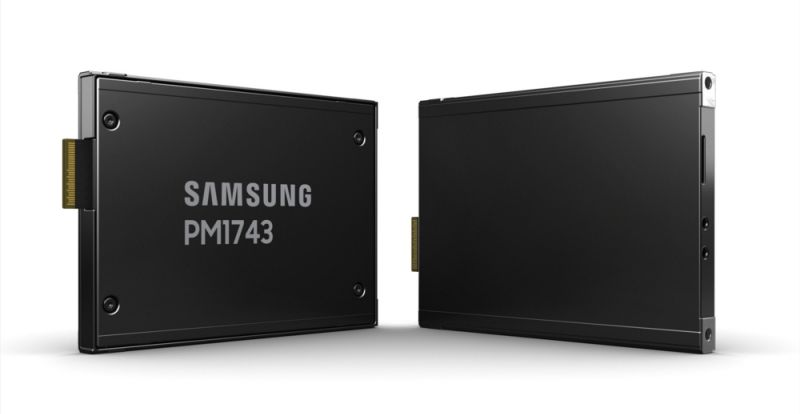The Samsung PM1743 has been announced in the run-up to CES 2022 as a PCIe 5.0 SSD for servers that significantly increase read/write speed and energy efficiency.
Samsung introduces its first SSD to use the PCIe 5.0 interconnect interface
The drive is based on a new, unknown PCIe controller and uses the sixth generation of V-NAND modules, which promise data transfer performance of 70% to 90% and 30% higher energy efficiency than the previous generation. The energy efficiency element will be critical for implementation in servers.
The PM1743 SSD appears to be the natural successor to the PM1733 that Samsung introduced for the server market. The improvements in specifications will be obvious. It moves from a PCIe 4.0 interconnect interface to PCIe 5.0, doubling its bandwidth. In addition, the sixth-generation V-NAND memory module is manufactured using a 128-layer process, as opposed to the 96 layers used in the company’s current enterprise SSDs.
Thanks to the PCIe 5.0 x4 interconnect, the drive was able to achieve maximum sequential read speeds of 13 GB/s and a maximum sequential write speed of 6.6 GB/s (presumably in the drive’s SLC cache). The number of IOPS this drive can achieve is 2.5 million random reads and 250,000 IOPS random writes.
Samsung also confirms that it has been working with Intel to validate the new drive, so they have already worked with Intel’s Alder Lake platform, which is the only one that supports PCIe 5.0 connectivity.
Samsung will offer the PM1743 in two variants. One will come in a 2.5-inch U.2 form factor. The other is the E3.S variant, a new 3-inch form factor for enterprise and data centers. The advantage of this new form factor is that it is designed for slightly larger drives that have a connector that can handle up to 16 lanes of PCIe.
The launch is scheduled for early next year.
